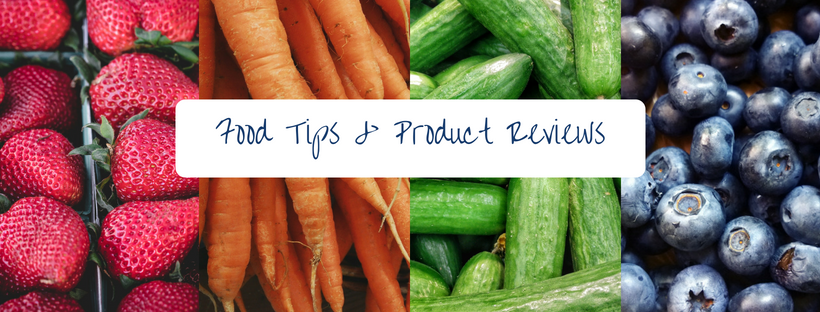Do you know the difference between pork loin and tenderloin?
If not, you’re not the only one.
Both cuts are absolutely delicious and most people might not bother learning the difference. After all, they’re both meat, they both taste good and they’re both fantastic choices for barbecue, aren’t they?
While all those things are true, tenderloin and pork loin are quite different and treating them the same will result in kitchen (or grill) accidents more often than not.
To avoid mixing the two cuts you need to learn more about them and what better way to do it than by reading the guide we’ve prepared for you.
More...
What is Pork Loin?

Also called pork center loin and pork roast, this thick pork cut comes from the pork’s back. Specifically, from below the shoulder all the way down to the leg.
This makes pork loin a large cut. Large enough that you can get steak-like pieces from it.
If you want to get technical, ‘pork loin’ is a wide term for various types of cuts that come from this specific area. Cuts you can find at the supermarket, such as: top loin roast, center loin chop, center-cut loin chop and more.
Pork loin can be sold with bones or boneless, and has a lean, mild flavored meat with thick fat on it, though depending on the cut, said fat can be trimmed.
- Related article: Best manual meat grinder
What are Tenderloins?

If tenderloin looks dramatically different to pork loins, it’s because it is.
This cut, also known as pork filet and pork tender, is sold boneless and comes from the muscle that runs alongside the backbone of the pig.
This is considered the most tender cut you can find when it comes to pork and it’s a very delicately flavored meat.
This, too, is considered a relatively lean meat and has a finely grained texture that most people love.
What Are the Differences Between Pork Roast and Pork Tenderloin?

Now that you know what each cut is like, let’s talk about the differences between the two of them.
- Location
- Taste
- Texture
- Size
- Price
Since pork loin is so large, it can be broken down into various cuts. This means the cuts can change flavor depending on where they come from. As a general rule, though, pork loin has a mild flavor that you’re bound to enjoy.
Pork tenderloin, on the other hand, has a very delicate and characteristic flavor, to the point that meat experts will be able to tell they’re eating tenderloin just by taking a bite.
As you can see, there are very obvious differences between both cuts of meats so you simply can’t cook them the same way.
How to Cook Tenderloin Vs How to Cook Pork Loin

Both cuts can be cooked in similar ways, but there’s a key difference that you should keep in mind.
- Pork loin has a very straightforward cooking method, as the best way of preparing it is by grilling it over medium heat.
Alternatively, you can always sear it before slow roasting it in the oven or stir-fry on a pan.
- Tenderloin is surrounded by a tough skin that needs to be removed before you do anything else; Once you get rid of this skin, you can grill and roast the tenderloin.
Since the cut is much leaner and more delicate, it needs less time to cook and you should be careful not to overcook it.
Find more information about pork below:
Can You Substitute Pork Tenderloin for Pork Loin?

The short answer? No.
As you can see, the differences are important enough that you simply can’t use these cut interchangeably.
They have different textures, different cooking times and different flavors, even though they have similar names.
With that in mind, what can you use to substitute pork loins and tenderloins?
Pork Loins and Tenderloins Substitutions and Alternatives

When it comes to replacing meat cuts, it’s hard to find a perfect substitute. After all, meat cuts are taken out of different parts of the animal for a reason.
However, if you don’t have any other option but to substitute with an alternative, try to find something that matches the texture and fat content and always, always use the same animal, unless you’re aiming for a modified version of a recipe.
Pork Loin
One of the best alternatives you can find to pork loins is a cut known as pork sirloin roast.
This cut is a particularly good replacement when you’re looking for a boneless cut.
It’s still taken from the back of the animal, albeit a different part, and packs quite a lot of flavor, though it’s not quite as tender. (Which isn’t a problem if you plan to slow cook)
Tenderloin
Due to its characteristic texture and flavor, tenderloin is a bit more difficult to replace.
If you absolutely have to, go for lean cuts such as chops and neck. There’s a good chance you’re going to have to trim away quite a lot of fat to achieve the desired results, but these will do quite nicely when you don’t have tenderloin at hand.
Remember, one of the main characteristics of tenderloin, other than its tenderness, is its very low fat content and that’s precisely the hardest thing to replicate so expect to do some extra work in order to match this.
Conclusion

Now that you know the main characteristics of pork loins and tenderloins, as well as the differences between them, you have a better understanding about these two cuts than most people out there.
We hope knowing the difference between both cuts not only helps you discover which cut is your favorite but also helps you find the best way to cook each one of them.
This way you’ll be able to enjoy delicious pork based meals while also surprising and delighting friends and family with your knowledge.
Do you have any questions, suggestions or anything else you’d like to tell us? Leave a comment, we’d love to hear from you!
Thank you very much for reading. Don’t forget to share this article if you found it useful.



Leave a Reply